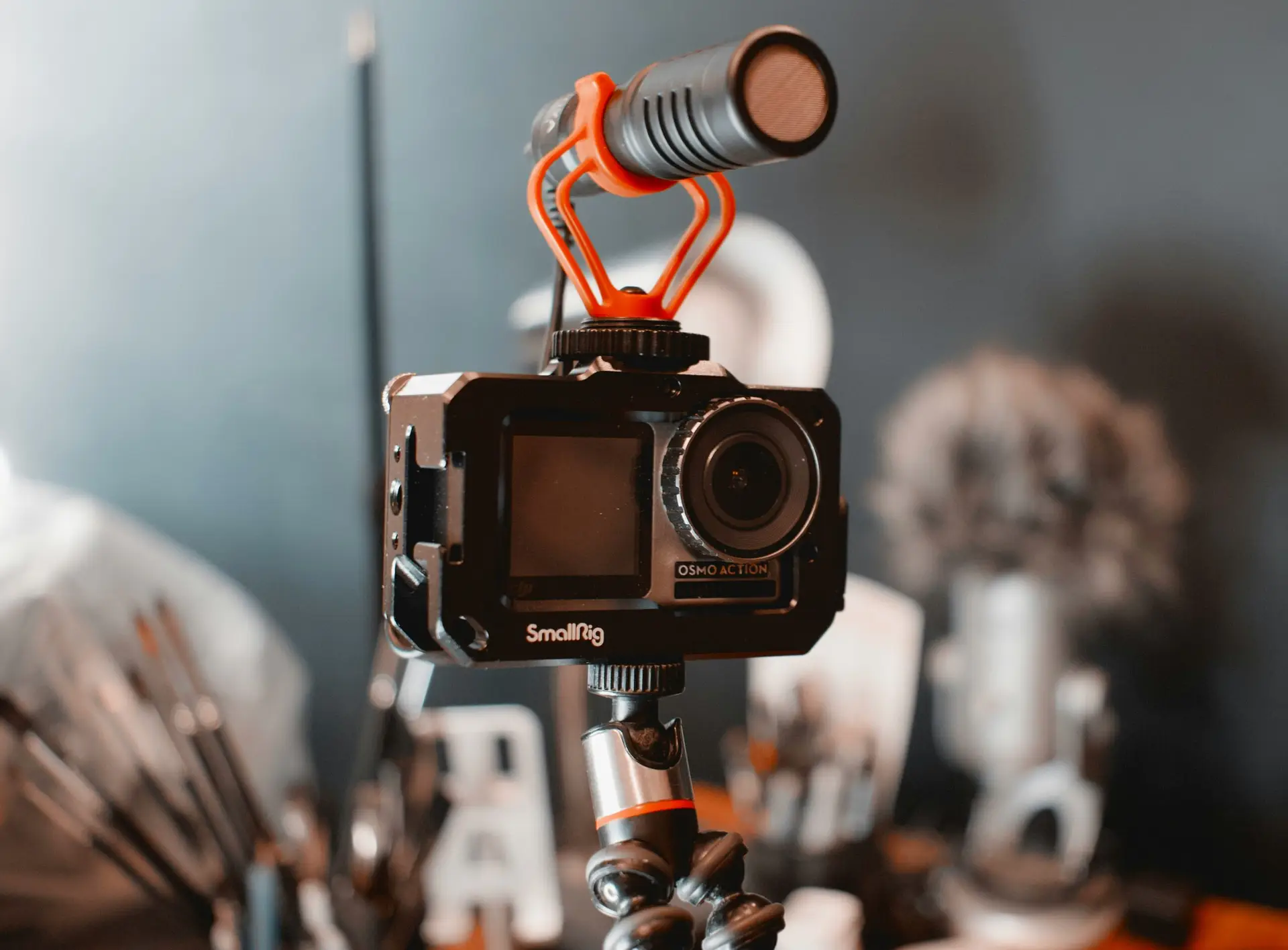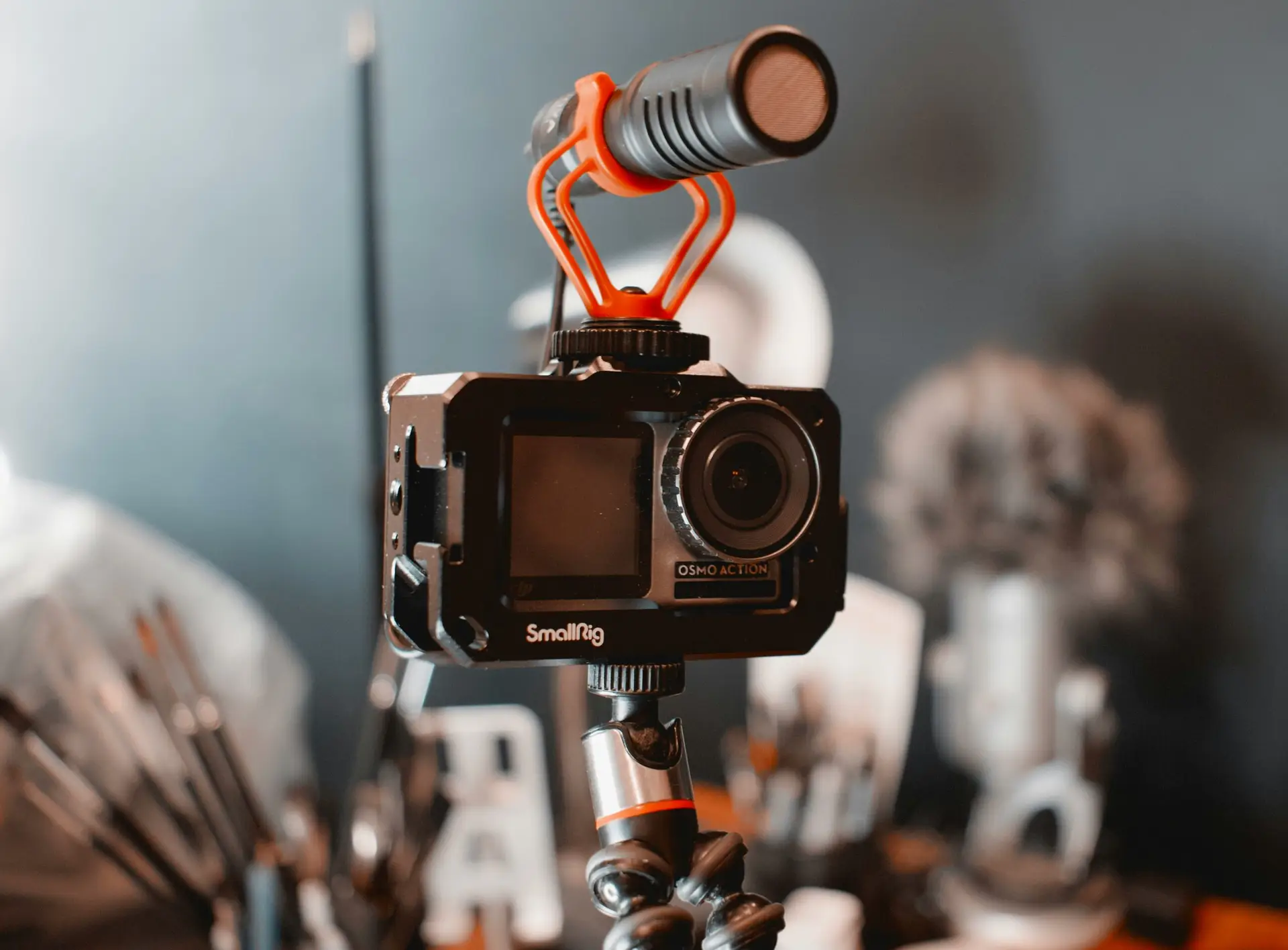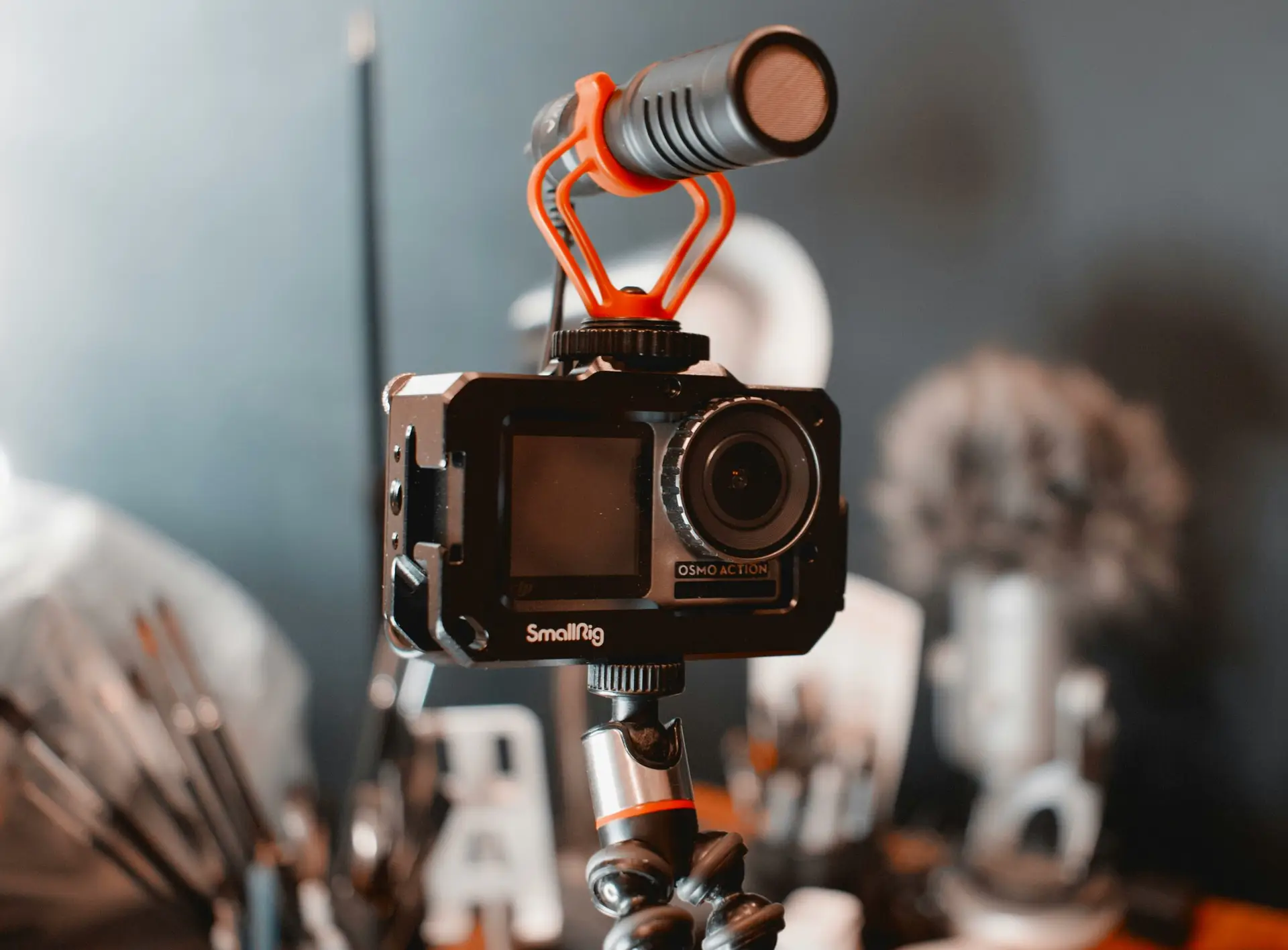In recent years, vlogging has emerged as a popular medium for content creators, offering a dynamic way to share experiences, tutorials, and adventures with a global audience. As this genre continues to evolve, the importance of selecting the right vlogging camera cannot be overstated. A high-quality vlogging camera can significantly enhance the viewer experience, setting professional vloggers apart in a crowded digital landscape.
The choice of a vlogging camera hinges on several critical factors. Firstly, video quality is paramount. Capturing high-resolution videos with vibrant colors and crisp details ensures that viewers remain engaged and find the content visually appealing. Cameras capable of recording in 4K or higher resolutions are particularly sought after for their ability to deliver striking clarity.
Portability is another essential consideration. A vlogger’s toolkit must often be lightweight and easy to carry, allowing for seamless shooting on the go. Compact and versatile cameras, which can be effortlessly transported from one location to another, are highly preferred among creators who frequently travel or shoot in diverse environments.
User-friendly features also play a pivotal role in selecting a vlogging camera. Intuitive interfaces, touchscreen capabilities, and customizable settings empower vloggers to focus more on content creation and less on technical complexities. Features like image stabilization, built-in microphones, and Wi-Fi connectivity enhance the overall shooting experience by enabling smooth footage and seamless integration with other devices.
Overall, investing in the right equipment is integral to producing high-quality vlogs that resonate with audiences. This comprehensive guide aims to navigate the evolving landscape of vlogging cameras, presenting top options that align with the diverse needs of modern content creators. Whether you’re an aspiring vlogger or an experienced filmmaker, making informed decisions about your gear will profoundly impact the success and growth of your channel.
Key Features to Look for in a Vlogging Camera
The selection of a vlogging camera necessitates a careful evaluation of several key features to ensure optimal performance and user satisfaction. One of the primary considerations is resolution. Vloggers often prefer 4K over HD due to the superior video quality, which captivates viewers and enhances the overall content experience. While some might find HD sufficient, 4K resolution provides a competitive edge by offering more detailed and crisp footage.
Image stabilization is another critical feature. It mitigates camera shake and ensures smooth, professional-looking videos, which are particularly important for on-the-go vlogging. Whether walking through a bustling city or capturing action shots, effective image stabilization technology makes a significant difference in the viewer’s experience.
Autofocus capabilities can considerably affect the ease of use and the final output quality. Cameras with advanced autofocus systems can swiftly and accurately maintain focus on moving subjects, a crucial aspect for dynamic vlogging environments. This feature ensures that the vlogger remains in sharp focus, keeping the audience engaged without any distractions caused by frequent focus adjustments.
Microphone input is indispensable for achieving high-quality audio. Built-in microphones often struggle with capturing clear sound, especially in noisy settings. A dedicated microphone input allows vloggers to use external microphones, ensuring superior audio clarity and reducing background noise, which significantly enhances viewer retention and satisfaction.
Long battery life is essential for uninterrupted shooting sessions. Vloggers often shoot on location and may not have immediate access to charging facilities. Therefore, a camera with robust battery performance enables prolonged shooting durations, preventing disruptions and ensuring a seamless vlogging experience.
Connectivity options such as Wi-Fi and Bluetooth are invaluable for modern vloggers. These features facilitate easy transfer of footage to other devices and enable instant sharing on social media platforms, streamlining the workflow and enhancing productivity. Additionally, wireless connectivity allows for remote control via smartphones, providing flexibility and convenience in various shooting scenarios.
Top 5 Vlogging Cameras of 2023
In 2023, the landscape of vlogging cameras has seen significant advancements, catering to the diverse needs of content creators. Here, we present a curated list of the top 5 vlogging cameras of this year, each evaluated based on their unique features, pros and cons, and targeted users.
Sony ZV-1
The Sony ZV-1 remains a favored choice among vloggers for its compact design and exceptional video quality. Its standout features include a 20.1MP stacked CMOS sensor, fast autofocus, and real-time Eye AF, making it ideal for capturing stunning details and motion. The camera’s directional 3-capsule mic ensures crisp audio capture. While its compactness suits beginner to intermediate vloggers, professionals may find the lack of interchangeable lenses limiting.
Canon EOS M50 Mark II
Canon’s EOS M50 Mark II offers an excellent blend of performance and portability. With a 24.1MP APS-C sensor and Dual Pixel autofocus, it impresses with high-quality visuals and smooth focus transitions. Additionally, its vari-angle touchscreen facilitates dynamic shooting angles, perfect for travel vloggers. However, its battery life can be a drawback for long recording sessions. This model caters to both amateur and semi-professional content creators seeking versatility and ease of use.
GoPro Hero10 Black
The GoPro Hero10 Black is synonymous with durability and action-packed vlogging. Its GP2 processor ensures double the performance of its predecessor, enabling 5.3K video at 60fps. HyperSmooth 4.0 stabilization delivers ultra-smooth footage, vital for adventure vloggers. Despite its rugged build and impressive specs, the small sensor size may not suit those prioritizing low-light performance. This camera targets extreme sports enthusiasts and outdoor adventurers.
Panasonic Lumix GH5 II
The Panasonic Lumix GH5 II is a powerhouse for professionals, offering a 20.3MP sensor and 4K 60p recording. Its advanced stabilization system ensures blur-free clips, crucial for handheld shooting. It also features live-streaming capabilities, expanding its usability for real-time content creation. However, its bulk and complex settings might overwhelm beginners. This camera is best suited for professional vloggers seeking top-tier video quality and versatility.
DJI Pocket 2
The DJI Pocket 2 stands out for its unique, ultra-compact design with a built-in gimbal, delivering smooth footage effortlessly. With a 1/1.7” sensor and 4K video capabilities, it offers excellent image quality in a portable package. The four microphones capture immersive sound, but its limited battery life and small sensor size may pose challenges in some scenarios. This camera is perfect for on-the-go vloggers and travel enthusiasts.
Each of these top vlogging cameras of 2023 offers unique strengths, catering to specific needs and preferences. Whether you are a beginner or a seasoned professional, there’s a camera in this lineup to help you create engaging and high-quality content.
Best Budget-Friendly Vlogging Cameras
For aspiring content creators or individuals seeking cost-effective solutions, finding the right budget-friendly vlogging camera is crucial. Fortunately, several cameras in the market offer excellent value without sacrificing essential features. Here, we highlight the top budget-friendly vlogging cameras of 2023—ideal for beginners or those on a tight budget.
The Canon EOS M50 Mark II stands out as a popular choice due to its versatile feature set. Priced under $700, it offers a 24.1MP sensor, 4K recording capability, and an intuitive Dual Pixel autofocus system. The vari-angle touchscreen and built-in microphone port are perfect for vloggers who need high-quality audio and varied shooting angles without breaking the bank.
The Sony ZV-1 positions itself as another excellent option for budget-conscious vloggers, retailing around $750. Despite its compact size, this camera packs a punch with its 1-inch 20.1MP sensor, excellent autofocus, and impressive background blur for professional-looking videos. The ZV-1 also boasts a directional three-capsule mic, ensuring clear audio capture essential for engaging vlog content.
The Panasonic Lumix G100, usually available for approximately $650, offers a robust package for novice vloggers. It features a 20.3MP sensor, 4K video recording, and a V-Log L mode for color grading. The camera’s lightweight design makes it well-suited for on-the-go content creation, while the OZO Audio technology ensures clarity in audio recording.
The GoPro HERO10 Black is an excellent pick for those who prioritize portability and ruggedness in their vlogging camera. At a price point of around $500, it features a new GP2 processor for double the performance, 5.3K video recording, and HyperSmooth 4.0 stabilization for ultra-smooth videos. It’s particularly suitable for travel and adventure vloggers who need a durable yet high-quality camera.
Finally, the DJI Pocket 2, priced under $450, delivers impressive stabilization and portability. Its 3-axis gimbal ensures smooth footage, and the 1/1.7″ sensor with 64MP resolution offers significant detail. The small form factor and ease of use make it particularly appealing for vloggers who value convenience and mobility.
Overall, these budget-friendly vlogging cameras prove that you don’t need to spend a fortune to get started. Each option provides a unique blend of affordability, functionality, and quality, catering to a variety of vlogging needs and preferences.
Cameras for Professional Vloggers
Professional vloggers often require high-quality cameras with advanced features to produce content that meets the elevated standards of their audience. The right equipment can make a significant difference in the quality of video output, which can ultimately influence viewer engagement and channel growth. Below, we explore several top-tier vlogging cameras recommended for pro-level content creation in 2023.
Sony Alpha 1
The Sony Alpha 1 is a powerhouse for professional vloggers, offering an impressive 50.1 megapixels and 8K video recording at 30fps, setting a new standard for video quality. Its 10-bit color depth ensures vibrant and accurate color representation, crucial for vivid cinematography. Additionally, the full-frame sensor and exceptional low-light performance make it suitable for various shooting environments. The camera’s ability to shoot in high frame rates also allows for smooth slow-motion effects, adding versatility to vlogs.
Canon EOS R5
The Canon EOS R5 stands out with its 45-megapixel resolution and ability to shoot 8K RAW video, a game-changer for content creators seeking the highest video quality. It supports a wide range of Canon RF lenses, providing flexibility in capturing different scenes. The 10-bit HDR PQ setting brings superior color grading options, essential for post-processing. With advanced autofocus and in-body image stabilization, the EOS R5 ensures sharp and stable footage, even in dynamic shooting situations.
Panasonic Lumix GH6
The Panasonic Lumix GH6 is another top contender, especially favored for its video-centric features. It offers 5.7K video recording at 60fps and 10-bit 4:2:2 internal recording, which helps maintain high-quality footage during editing. Its micro four-thirds sensor, while smaller, provides a balanced mix of video quality and ease of lens compatibility. This model also includes extensive video assist features, such as waveform monitoring and V-Log recording, catering to the meticulous demands of professional vloggers.
Nikon Z9
The Nikon Z9 is a robust option with a 45.7-megapixel sensor and the capability to record 8K video at 30fps. Its advanced focusing system, with subject tracking and eye-detection, is ideal for capturing precise details. The camera also provides 10-bit and 12-bit RAW video options, giving vloggers the flexibility needed for high-quality post-production work. The Nikon Z9’s durable build and ergonomic design make it a reliable choice for on-the-go content creators.
Conclusion
Investing in a high-end camera equipped with advanced features such as high frame rates, 10-bit color depth, large sensors, and interchangeable lenses is crucial for professional vloggers. These specifications not only enhance video quality but also offer greater creative control, ultimately allowing for more polished and engaging content. Whether choosing the Sony Alpha 1, Canon EOS R5, Panasonic Lumix GH6, or Nikon Z9, each camera brings unique attributes to meet the sophisticated needs of professional vlogging.
Comparing Mirrorless vs. DSLR for Vlogging
When choosing a vlogging camera, the decision between mirrorless and DSLR models is a crucial one. Each type has unique characteristics that can significantly impact your vlogging experience. One of the primary considerations is the size and weight of the camera. Mirrorless cameras tend to be smaller and lighter than their DSLR counterparts. This makes them more portable and easier to handle, especially for vlogs that involve a lot of movement or travel.
Autofocus performance is another vital aspect to consider. Mirrorless cameras often utilize more advanced autofocus systems, which can provide faster and more accurate focusing. This is particularly beneficial for vlogging, where maintaining sharp focus on the subject is essential. In contrast, DSLRs use a combination of phase detection and contrast detection, which can sometimes lead to slower autofocus speeds.
The lens compatibility of DSLR cameras is a major advantage. DSLRs have been around for longer, and as a result, they boast a more extensive range of lenses and accessories. This variety allows for greater creative flexibility, enabling vloggers to achieve different looks and effects. However, mirrorless cameras are rapidly catching up, with manufacturers continually expanding their lens collections.
Battery life is also a critical factor. DSLRs tend to have superior battery performance, allowing for longer recording sessions without the need for frequent recharges. This can be a noteworthy benefit for those who shoot extensive footage. On the other hand, the electronic viewfinders and other advanced features in mirrorless cameras can lead to quicker battery drain.
Ultimately, the best choice between mirrorless and DSLR cameras will depend on your specific vlogging requirements. For vloggers who prioritize portability and cutting-edge autofocus technology, mirrorless cameras might be more advantageous. Conversely, those who value a broader selection of lenses and superior battery life might find DSLRs to be a better fit.
When it comes to enhancing your vlogging setup, the right accessories can significantly elevate the quality of your content. Investing in essential accessories like external microphones, tripods, lighting kits, gimbals, and extra batteries can provide noticeable improvements in audio clarity, video stability, lighting conditions, and overall filming efficiency.
External Microphones
An integral accessory for any vlogger is an external microphone. Built-in camera microphones often fail to capture high-quality sound, especially in noisy environments. A dedicated external microphone, such as a shotgun mic or a lavalier mic, can drastically improve audio clarity and reduce background noise. When choosing an external microphone, consider factors like compatibility with your camera, intended recording environment, and whether you require wireless capabilities.
Tripods
Stability is crucial in producing professional-looking videos. A sturdy tripod is indispensable for maintaining a fixed, stable shot. Adjustable tripods ensure versatile usage, allowing you to shoot from various angles and heights. For vloggers who frequently travel, compact and lightweight tripods are ideal due to their portability and ease of setup.
Lighting Kits
Good lighting can transform the visual appeal of your vlogs. Natural light is often unpredictable, making a reliable lighting kit essential. LED panels, ring lights, and softboxes are popular choices among vloggers. LED panels offer versatility and adjustable brightness levels, ring lights provide even lighting ideal for face-centered videos, and softboxes diffuse light softly, reducing harsh shadows. Choose lighting solutions that complement your filming environment and subject matter.
Gimbals
If your vlogs involve a lot of movement, a gimbal can provide the stabilization needed for smooth footage. Handheld gimbals with 3-axis stabilization are particularly effective for dynamic shots. When selecting a gimbal, ensure it supports the weight and dimensions of your camera and offers the desired stabilization features such as follow modes and time-lapse capabilities.
Extra Batteries
Nothing disrupts a filming session more than a dead battery. Having extra batteries on hand is a simple yet crucial step to ensure uninterrupted recording. For extended filming sessions, consider investing in a battery grip or portable charger compatible with your camera model. Pay attention to battery life specifications and recharge duration when selecting additional batteries.
Choosing the right accessories tailored to your camera and vlogging needs can improve the production quality of your content significantly. Each accessory serves to eliminate common issues encountered during vlogging, from wobbly footage to poor audio quality, ensuring that your vlogs are polished and professional.
Future Trends in Vlogging Cameras
As the vlogging landscape continues to evolve, emerging trends and innovations in vlogging cameras are set to redefine both the tools in use and the content creation process. One of the most notable advancements anticipated is the integration of Artificial Intelligence (AI) in vlogging cameras. AI technology is expected to significantly enhance video editing capabilities through features such as automated scene recognition, facial detection, and real-time effects application, making it easier for vloggers to produce high-quality video content quickly and efficiently.
Another exciting development is the incorporation of Virtual Reality (VR) and Augmented Reality (AR) into vlogging cameras. These technologies offer immersive experiences that enable vloggers to create more engaging and interactive content. With VR and AR, audiences can experience vlogs in a more profound and personal way, fostering a deeper connection between vloggers and their viewers. As these technologies become more accessible and advanced, we can expect a surge in their adoption within the vlogging community.
In addition to sophisticated tech integrations, improvements in compact camera designs are also on the horizon. Since portability and ease of use are crucial for vloggers, manufacturers are focusing on developing lightweight and ergonomic cameras without compromising on performance. Innovations in battery life, stabilization technologies, and lens versatility are set to make compact vlogging cameras even more powerful tools for content creators.
The rise of content creation ecosystems is another trend poised to shape the future of vlogging. Integrated platforms that seamlessly connect cameras, editing software, and distribution channels will simplify the production process, enabling vloggers to focus more on creativity and less on technical hurdles. These ecosystems will also provide analytics tools to help vloggers better understand their audience and optimize their content strategy.
Overall, the future of vlogging cameras will be marked by technological advancements that enhance creative freedom and streamline content production, setting the stage for even more dynamic and engaging vlogs.




